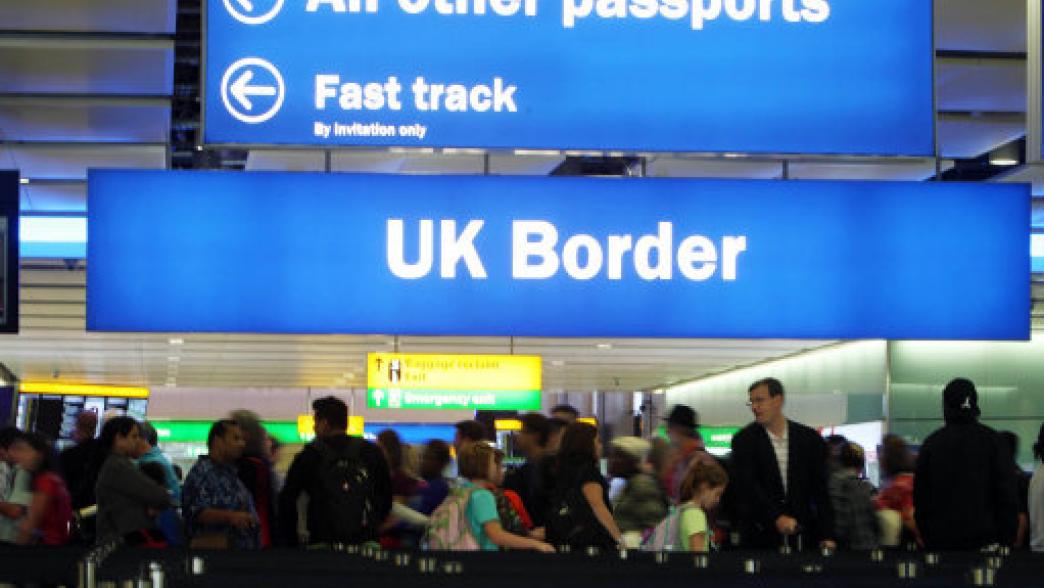
The Conservatives and Labour both promise to overhaul the immigration system. But Joe Owen says that neither offer a credible plan for when or how they will do it. Their visions may be very different but both are still a long way off.
If you vote for the Conservatives or Labour, you’re voting to end free movement and fundamentally change the UK immigration system.
But the two manifestos, released last week, contain very different propositions. The Conservatives have a top-down approach, chasing a net migration figure they deem to be “sustainable”. Labour wants to reform from the bottom up, by ending exploitation of migrants and promoting integration (using several policies that also appear in the Liberal Democrat manifesto).
There are a couple of points of convergence. Both parties want to secure the rights of EU nationals but decide not to address the huge challenges in doing so. And they both avoid detail on future EU migration policy. Finally, neither manifesto makes it clear when any changes might happen.
Conservative manifesto
The party will need to do more than just “bear down” to meet their target.
The key point is that Theresa May continues to chase the “tens of thousands” target. A target that eluded her as Home Secretary for six years, and that, according to the George Osbourne’s Evening Standard, has no support among May’s senior Cabinet members.
The Conservatives promise to “bear down” on non-EU migration, which currently accounts for about half of the 273,000 net migration figure. And we are given some indication of how they will do it: doubling fees for employers hiring migrants, making it tougher for students to stay after their studies and increasing the financial threshold for family visas. These policies are designed to make non-EU migration a little harder and a little less attractive. But a “tens of thousands” target would require big change.
None the wiser on post-Brexit migration policy and when to expect it.
What happens to EU migration after Brexit remains unclear. We know that under the Conservatives it would be “reduced and controlled” through a new immigration policy, but there’s no sense of how. Language around “phased implementation” of immigration changes from the Brexit White Paper has been lost, presumably temporarily, and there’s no indication of when overhaul of the immigration system might happen.
Our recent research shows that, even if you ignore the economic arguments against the “tens of thousands” target and the criticism from business, the administrative task of changing migration policy is huge. A Conservative government hoping to come close to its 100,000 target by 2022 would need to act very quickly after the 8 June.
Labour manifesto
Labour offers an alternative to the target, but we don’t know what it is.
Labour commits to ending free movement after Brexit, but refuses to set immigration targets. The party says it would develop and implement “fair immigration rules”, informed by negotiations with the EU and other global partners. The manifesto rules nothing out, suggesting employer sponsorship, work permits, visa regulations or a “tailored mix”. Being vague might suit the party for now but decisions would need to be made quickly if Labour wants to end free movement in a five-year term.
The many additional enforcement officers, not the few.
The real emphasis for Labour is ending abuse in the migration system and labour market, stepping up action against exploitation, enforcing the minimum wage and ending “overseas-only recruitment”.
Integration is also recognised as an important factor, with a promise to set up a Migrant Impact Fund, and there is a commitment to stop including students in migration figures. But there’s very little information on how or when a Labour government would make this happen.
The manifesto also suggests that a Labour government would not use employers, landlords and public services in the enforcement of immigration. But these groups play a critical role in the current system; trying to deliver Labour’s changes to migration and labour market abuse would be very difficult without them – or a significant increase in enforcement staff.
There is a commitment to increase border staff, but very little immigration enforcement happens at the border. Additional staff would be more use to Labour policy aims in labour market enforcement units, checking employers are paying the minimum wage. Now, the average UK employer can expect a visit from one of these units once every 250 years.
Two different approaches, but neither looks credible in the short term.
The Conservatives are keeping their target but say little about how they plan to achieve it. Labour sets out a different approach – bottom-up change to address abuse of the system – but does nothing to recognise the huge administrative burden this will place on government.
Both parties argue that free movement should end after we leave the EU, but details beyond that are patchy. Delivering change on this sort of scale will take years, and voters may find themselves back at the ballot box in 2022 before any new government’s manifesto promises on immigration become a reality.
- Supporting document
- Brexit_immigration_WEB.pdf (PDF, 339.15 KB)